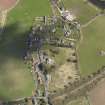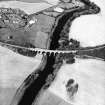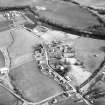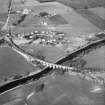Following the launch of trove.scot in February 2025 we are now planning the retiral of some of our webservices. Canmore will be switched off on 24th June 2025. Information about the closure can be found on the HES website: Retiral of HES web services | Historic Environment Scotland
Roxburgh, General
Burgh (Medieval), Village (Period Unassigned)
Site Name Roxburgh, General
Classification Burgh (Medieval), Village (Period Unassigned)
Canmore ID 57204
Site Number NT63SE 22
NGR NT 6995 3067
NGR Description Centred on NT 6995 3067
Datum OSGB36 - NGR
Permalink http://canmore.org.uk/site/57204
- Council Scottish Borders, The
- Parish Roxburgh
- Former Region Borders
- Former District Roxburgh
- Former County Roxburghshire
The modern village of Roxburgh, which evidently originated in the late seventeenth century, lies about 3km to the south-west of its deserted medieval predeccessor.
At one time, the village comprised two parts, the Upper and the Lower towns, but now only one concentration of settlement survives. At its centre lies the church, while the majority of the houses lie on either side of a single road, Teviot Road.
Roxburgh's population peaked in 1861, when it reached 1,178, but by 1951 it had fallen to 602. By the 1980s, the village consisted of only twenty-seven houses, twelve of which belonged to Roxburghe estates, and four were local authority council houses.
Text prepared by RCAHMS as part of the Accessing Scotland's Past project
NT63SE 22 centred 6995 3067
Trial Trench
An evaluation was undertaken in February, 2015 in the Garden of Innescote (NT 70069 30702) by KLR Pedersen. No significant archaeological features or deposits were identified apart from a cobble filled drain or services conduit.












































































